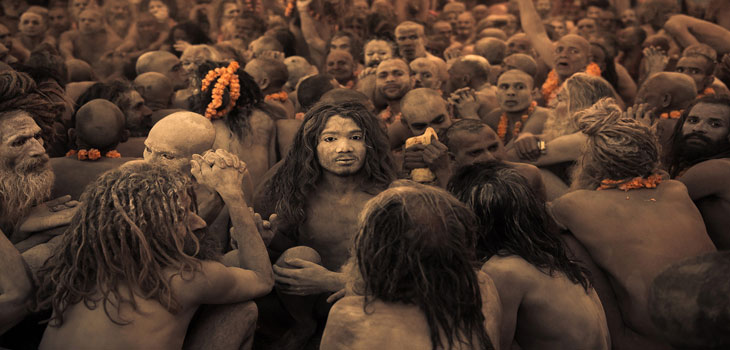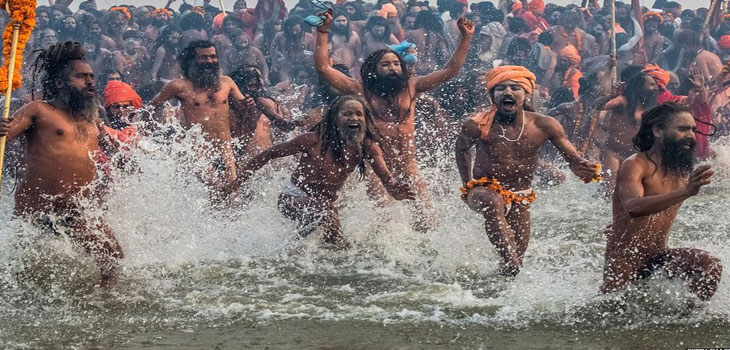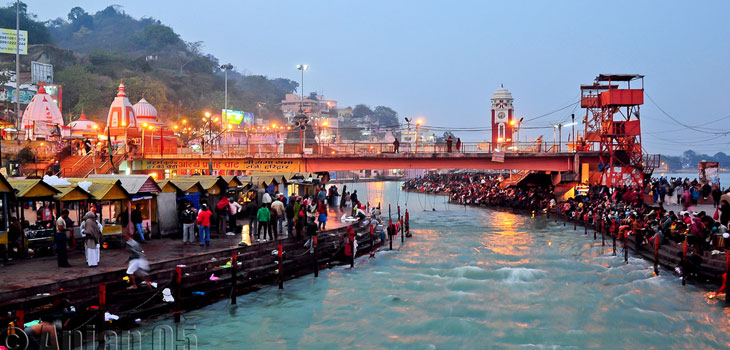Prayagraj Maha Kumbh Mela is going to be held in 2025 in Prayagraj (formerly known as Allahabad). Kumbh is the largest religious congregation celebrated by millions of Hindu pilgrims from all across the world. Bathing dates of Prayagraj Maha Kumbh Mela 2025 will be announced soon. Prayagraj is one of the four sites of the Kumbh fair. Other places are Prayagraj, formerly known as Allahabad, Nasik, and Ujjain. Kumbh is significant to Hindus. The main event of the fair is bathing. Devotees come here and take part in bathing along with millions of other Hindu Pilgrims. The next Kumbh Mela will be held in Prayagraj. We will also keep you updated about the Shahi Snan (Bathing) dates for Maha kUmbh Mela in Prayagraj 2025. Please find below all the Sahi Snan dates and other bathing dates on auspicious days during the Maha Kumbh Mela 2025. .
Kumbh Mela derives its name from the immortal - Pot of Nectar - described in ancient Vedic scriptures known as the Puranas. Kumbha in the Sanskrit language means Pot or pitcher. Mela means festival. Thus Kumbh Mela means Festival of the Pot. Here it means, a festival celebrating the appearance of the Pot of nectar.
The ancient origin of Kumbh Mela is described in the time-honored Vedic literature of India. As having evolved from bygone days of the universe when demigods and demons conjointly produced the nectar of immortality. It is said that demigods and demons assembled on the shore of the milk ocean that lies in the celestial region of the cosmos. The demigods and the demons made a plan to churn the milk ocean to produce the nectar of immortality. They then agreed to share the nectar equally once it was produced.
For the task of churning the milk ocean, the Mandara Mountain was used as the churning rod, and Vasuki, the king of serpents, became the rope for churning. As the churning began, the Mandara Mountain began to sink deep into the ocean, at which time Vishnu incarnated as a great tortoise and supported the mountain on His back. With the demigods at Vasuki’s tail and the demons at his head, they churned the milk ocean for one thousand years.
The churning of the milk ocean first produced a deadly poison that Shiva drank without being affected. As Shiva drank the poison, a few drops fell from his hands and were locked up by scorpions, snakes, and similar other deadly crea¬tures. After Shiva drank the poison, numerous opulent items were produced. First a Surabhi cow appeared, who could yield unlimited quantities of milk. A white horse named Uccaihsrava was then produced, as well as a white elephant named Airavata. Then a valuable gem called the Kaustubha-mani appeared.

Next came the apsaras, beautiful dancing girls, and a host of other wonderful things appeared from the milk ocean. At last a male person named Dhanvantari appeared carrying the pot of immortal nectar in His hands. Seeing Dhanvantari with the pot of nectar, both the demigods and demons became anxious. The demigods, being fearful of what would happen if the demons drank their share of the nectar of immortality, forcibly seized the pot.
Wherever the demigods went with the pot of nectar, fierce fighting ensued. In an endeavor to keep the nectar from falling into the hands of the demons, the demigods hid it in four places on the earth, Prayag (Allahabad), Hardwar, Ujjain, and Nasik. At each of the hiding places, a drop of immortal nectar spilled from the pot and landed on the earth. These four places are since believed to have acquired mystical power.
Eventually, the demons woman, Mohini-murti, and approached the demons. When the demons saw the charming beauty of Mohini-murti, they lost all composure and the demons completely forgot about drinking the nectar of immortality. While the demons were thus bewildered by her beauty, Mohini-murti seized the nectar and returned it to the demigods, who drank it immediately.
Prayagraj (formerly known as Allahabad) is considered one of the oldest and religious city of India. It is often called as Prayag. It comes under the state of Uttar Pradesh in north India. Prayagraj is situated around 200 kilometers away from Lucknow, a capital city of Uttar pradesh. According to the Hindu legends, Prayagraj is the place where Lord Brahma Offered his first sacrifice after creating the world. According to the Hindu mythology , Lord Brahma is the creator of universe. In Sanskrit, Prayag mean "Place of Sacrifice".The religious significance of Prayagraj has also been rates highly because of being one of the four sites of Hindu Mass pilgrimage known as

The festival is religiously most important for the Hindus. At every Kumbh occasion, millions of Hindus take part in the celebrations. During 2003 Kumbh at Haridwar, more than 10 million devotees gathered at the site. Saints, priests, and yogis from all corners of India gathered to participate in Kumbh. Haridwar is considered very holy because Ganga enters plains from mountains here itself.
Kumbh Mela derives its name from the immortal - Pot of Nectar - described in ancient Vedic scriptures known as the Puranas. Kumbha in the Sanskrit language means pot or pitcher. Mela means 'festival'. Thus Kumbh Mela means festival of the pot. Or in this case a festival celebrating the appearance of the pot of nectar.
The ancient origin of Kumbh Mela is described in the time-honored Vedic literature of India as having evolved from the Bygone Days of the universe when the demigods and the demons conjointly produced the nectar of immortality. It is said that the demigods and the demons assembled on the shore of the milk ocean that lies in the celestial region of the cosmos. The demigods and the demons made a plan to churn the milk ocean to produce the nectar of immortality. They then agreed to share the nectar equally once it was produced.
For the task of churning the milk ocean, the Mandara Mountain was used as the churning rod, and Vasuki, the king of serpents, became the rope for churning. As the churning began, the Mandara Mountain began to sink deep into the ocean, at which time Vishnu incarnated as a great tortoise and supported the mountain on His back. With the demigods at Vasuki tail and the demons at his head, they churned the milk ocean for one thousand years.
The churning of the milk ocean first produced a deadly poison that Shiva drank without being affected. As Shiva drank the poison, a few drops fell from his hands and were locked up by scorpions, snakes, and similar other deadly creatures. After Shiva drank the poison, numerous opulent items were produced. First a Surabhi cow appeared who could yield unlimited quantities of milk. A white horse named Uccaihsrava was then produced, as well as a white elephant named Airavata. Then a valuable gem called the Kaustubha-mani appeared.
Next came the apsaras, beautiful dancing girls, and a host of other wonderful things appeared from the milk ocean. At last a male person named Dhanvantari appeared carrying the pot of immortal nectar in his hands. Seeing Dhanvantari with the pot of nectar, both the demigods and demons became anxious. The demigods, being fearful of what would happen if the demons drank their share of the nectar of immortality, forcibly seized the pot.
Wherever the demigods went with the pot of nectar, fierce fighting ensued. In an endeavor to keep the nectar from falling into the hands of the demons, the demigods hid it in four places on the earth, Prayag (Allahabad), Hardwar, Ujjain, and Nasik. At each of the hiding places, a drop of immortal nectar spilled from the pot and landed on the earth. These four places are since believed to have acquired mystical power.
Eventually, the demons woman, Mohini-murti, and approached the demons. When the demons saw the charming beauty of Mohini-murti, they lost all composure. Seeing Her slender hips, raised breasts, and pleasing smile, the demons completely forgot about drinking the nectar of immortality. While the demons were thus bewildered by Her beauty, Mohini-murti seized the nectar and returned it to the demigods, who drank it immediately
